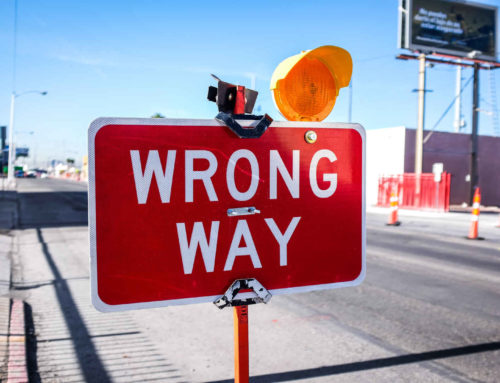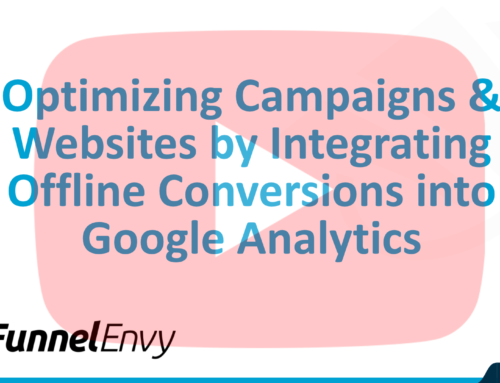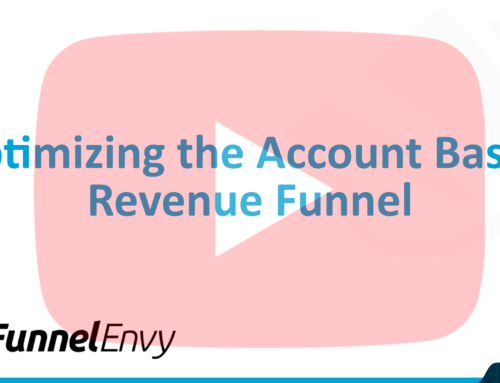In the worlds of content marketing and conversion optimization, the buying funnel is a core part of the discussion. Understanding your customers and how they move through your buying process is absolutely critical for creating content, design, and other inputs that get prospects to take action. It’s also the foundation of developing smart strategies for conversion testing programs.
But the concept of a one size fits all approach to mapping the buying funnel misses something important. The standard formulas may be overly simplified for more complex products, such as software as a service (SaaS) products that rely on multiple micro-conversions to make the sale. Here’s an in-depth guide that’s designed to help you successfully map the buying funnel for a SaaS product. It’s also intended to serve as a case study for other marketers, especially those in the business to business (B2B) space that are struggling to understand their buyer’s journeys and convert those into actionable insights.

The quick guide to mapping your funnel and why it’s sometimes not enough
AIDA. Those four letters encapsulate a core concept for how marketers connect with an audience:
- A = Attention. Grab people’s awareness, and ensure that they know you exist.
- I = Interest. Differentiate your product enough and position it as relevant to your audience to capture their interest.
- D = Desire. Personalize your approach and convince your audience that they want your product or service. Further, convince them that it’s the specific solution to their pressing problem, need, or situation.
- A = Action. Get your audience to take action and make the purchase, sign up, or follow other calls to action that you’ve built into your content.
AIDA provides a general framework for understanding how sales and marketing works. It’s also a useful approach to developing your conversion optimization process for solving a specific issue. But what if AIDA, or another basic approach, isn’t getting you enough detail and insight into what’s working and not working in your funnel?
Tracking your funnel through SaaS specific actions
SaaS tools, and other complex products, have a unique conversion process. Here’s a high-level view of the touch points that your customers typically have with your product:
- Learn about your brand
- Website visitor
- Download free trial
- Activation
- Subscription
- Ongoing payments
You can most effectively understand your funnel by mapping it along two dimensions: the underlying motivations, which you can connect back to AIDA to an extent, and through actions, which are largely product specific. Let’s take a closer look at how the two segments of this particular case study connect.
Attention
There’s a point in every sales process, regardless of the product, that starts with getting your prospect’s attention. In the case of a SaaS product, it’s focused on how your prospect found your brand. This could be online, via a referral, or through marketing materials. It’s carried through, at least initially, to the website visit. The prospect verifies that you’re a real company, and have a professional online presence that’s worthy of their further attention.
Interest
Around the second step, visiting your website, the process transitions to building interest. You begin to speak to the benefits of your product, identify your product with your prospect, and differentiate your product from everything else on the market. This phase could theoretically continue through the period where the prospect accesses a free trial and activates it. The challenge here is that you’re also firmly in desire territory. The prospect has to want the product enough to take the time to download it and try it out. Where one phase ends and another begins during this phase is unclear.
Desire
We’ve already touched on desire. Desire starts early in the process, with the desire to download a trial copy of your software. But desire needs to be stimulated enough to get them to take that next step of signing up and becoming a customer. Just as quickly as they move to action in order to keep the funnel moving. But SaaS products also need to stimulate an ongoing desire so that the prospect remains interested in your product and willing to pay up when the free trial expires.
Action
It’s also important to tie this back to the notion of action, specifically the idea that the SaaS funnel has multiple points of conversion and calls to action. This complex product, much more so than selling a straightforward item such as a vacuum cleaner or a book, requires a preliminary commitment to download the product. Subsequently customers need to try it out, take the action of subscribing, and then repeatedly take the action of staying subscribed.
The challenge with complex buying cycles is that they’re hard to capture on a linear map. The progression of behaviors is often straightforward, but the motivations that need to be triggered at specific junctures in the interactions are less clear and frequently overlap. A visual representation of this can end up looking more like a web than the orderly funnel we’ve all come to expect. While the actions you should take to move people along from step one to step two in a process are easy enough to grasp, managing a process around simultaneously keeping desire high while moving a prospect through a series of small actions is a more challenging undertaking. This scenario is exactly where conversion rate optimization can come into play and help you eliminate blockages in the process.
Identifying blockages in the funnel
The key to successfully navigating conversion challenges in your funnel is identifying where your blockages occur. As you uncover these blockages, you can test alternatives to find out where you can lift up your conversion rates. In a straightforward funnel, it’s easier to say “we’re not making the conversion from interest to desire, so we’re not making the sale.” In more complex funnels, your most effective way to achieving lift may be by focusing on the behavioral blockage points.
Let me explain. For example, taking the loose SaaS funnel described above, you may find that prospects who download your software don’t activate the free trial. From a conversion standpoint, you now need to uncover why. Testing could reveal that your technology is too complex, that prospects are hesitant to give a credit card to activate their trial, or that your initialization process needs to be streamlined. By clarifying this, you’ll be successful in driving more prospects through your funnel to that next stage. Even though you’re focused on the behavior, having a better understanding of the underlying feeling you’re trying to create will keep you moving in the right direction.
Most of your blocks in the funnel fit into one of three categories
- Lack of product-market fit – A gap in the product-market fit isn’t a problem with the funnel per se. It’s a lack of resonance between your product and the audience you’re going after. You’ll see this most during the attention phase, when you’re trying to get on your prospect’s radar and trying to get her to stick around and read your materials. If multiple tests to messaging, design, and positioning can’t shift this dynamic into profitability, it’s time to evaluate your underlying assumptions.
- Your value proposition isn’t compelling enough – It could be that you’ve got the right product/market fit, but that you haven’t worked out your positioning. Many factors and players are competing for your prospects’ attention. If you’re not on message, you’ll see them drifting out of the interest and desire phases. When this problem presents, it’s critical that you dig into your audience information and rigorously test your copy, positioning, and core elements of your product until you identify the right focus.
- The obstacles override the urgency – Finally, if you’re failing to see conversions you need to look at three things. Let’s assume that your message is focused correctly in the last step. That leaves two areas. The first is urgency. It could be that your marketing has failed to create a sense of urgency, or that conversely the problem you’re targeting isn’t really urgent for your audience. Finally, it could be that while the issue is urgent that logistical problems are real barriers to getting conversions. In the case of urgency, it’s time to invest in determining whether you can apply some of the principles of persuasion (for example, scarcity, discounts, and bonuses) to get people to take action. If your issue is logistical, it’s time to employ a testing program to help you develop a streamlined process and to put a clear focus on UX design.
Mapping a buying funnel for a SaaS product is a complex process. From understanding a sophisticated buyer to navigating each of the steps needed to get a long-term SaaS subscriber, mastering this process can take a considerable investment of time and energy. But in the end, it’s well worth it. From a conversion standpoint, you’ll be well-positioned to develop hypotheses and conduct structured tests that can help you capture more customers, revenue, and profits.
How have you mapped or redesigned your funnel? Let us know in the comments below.





